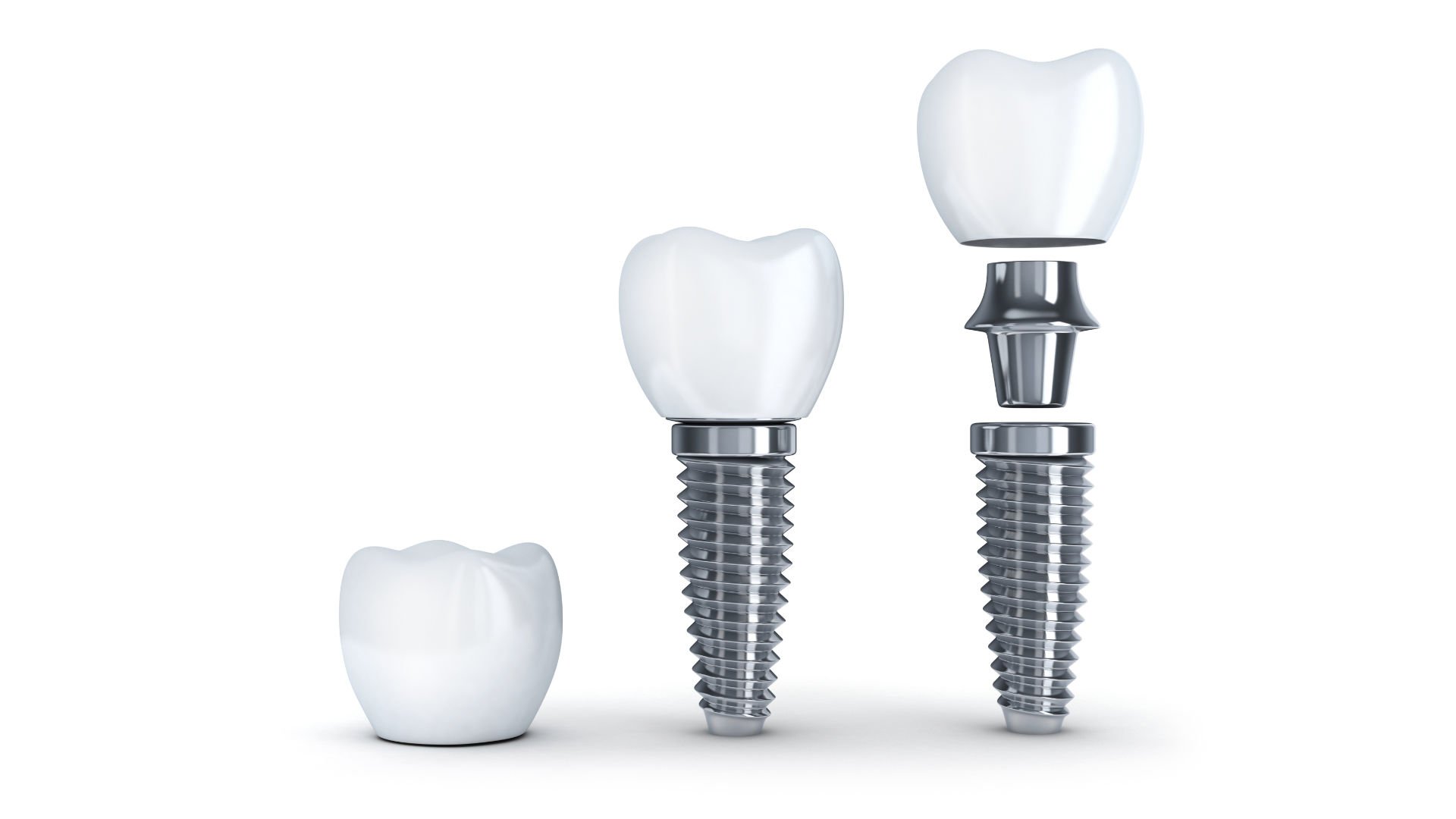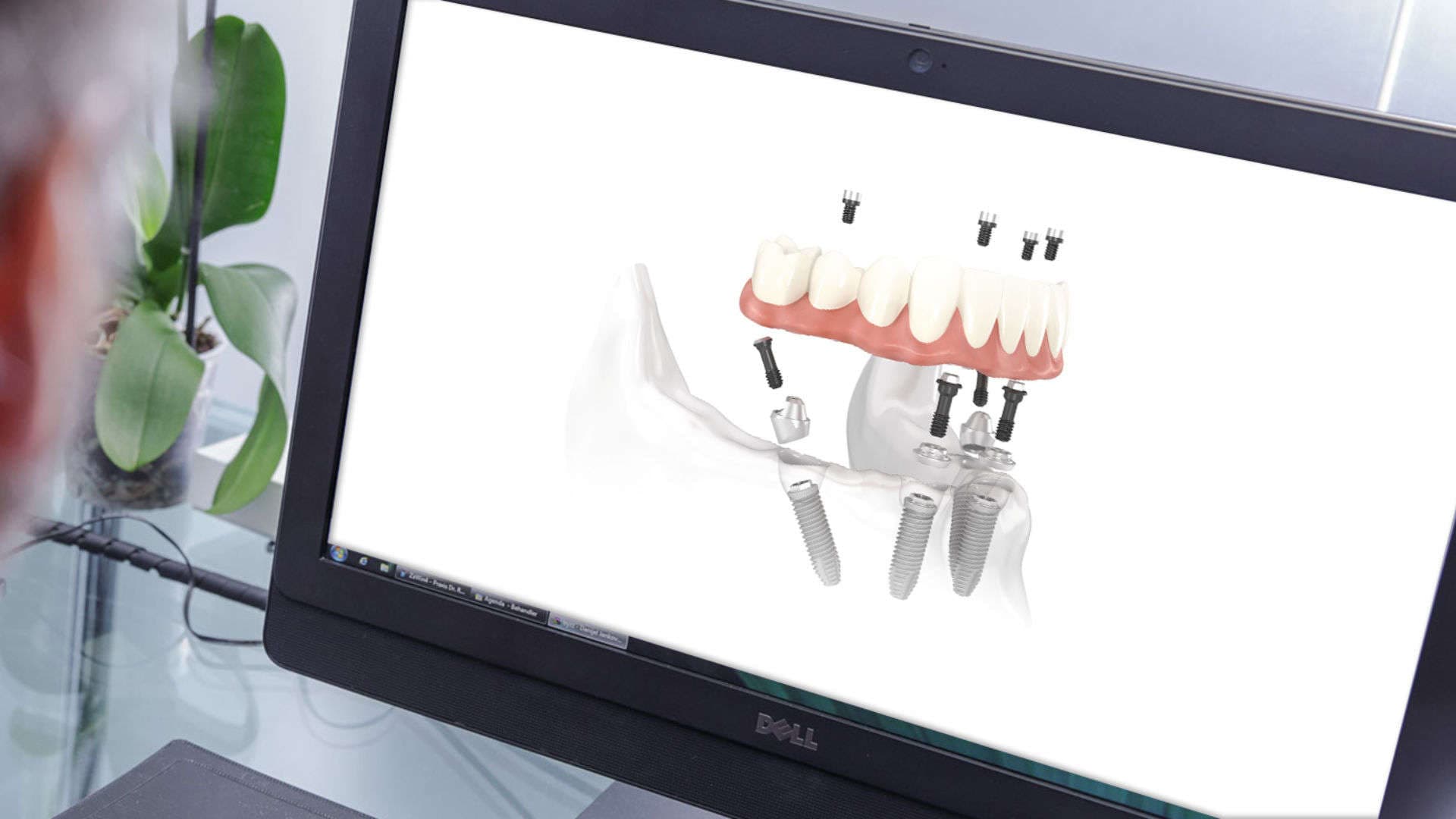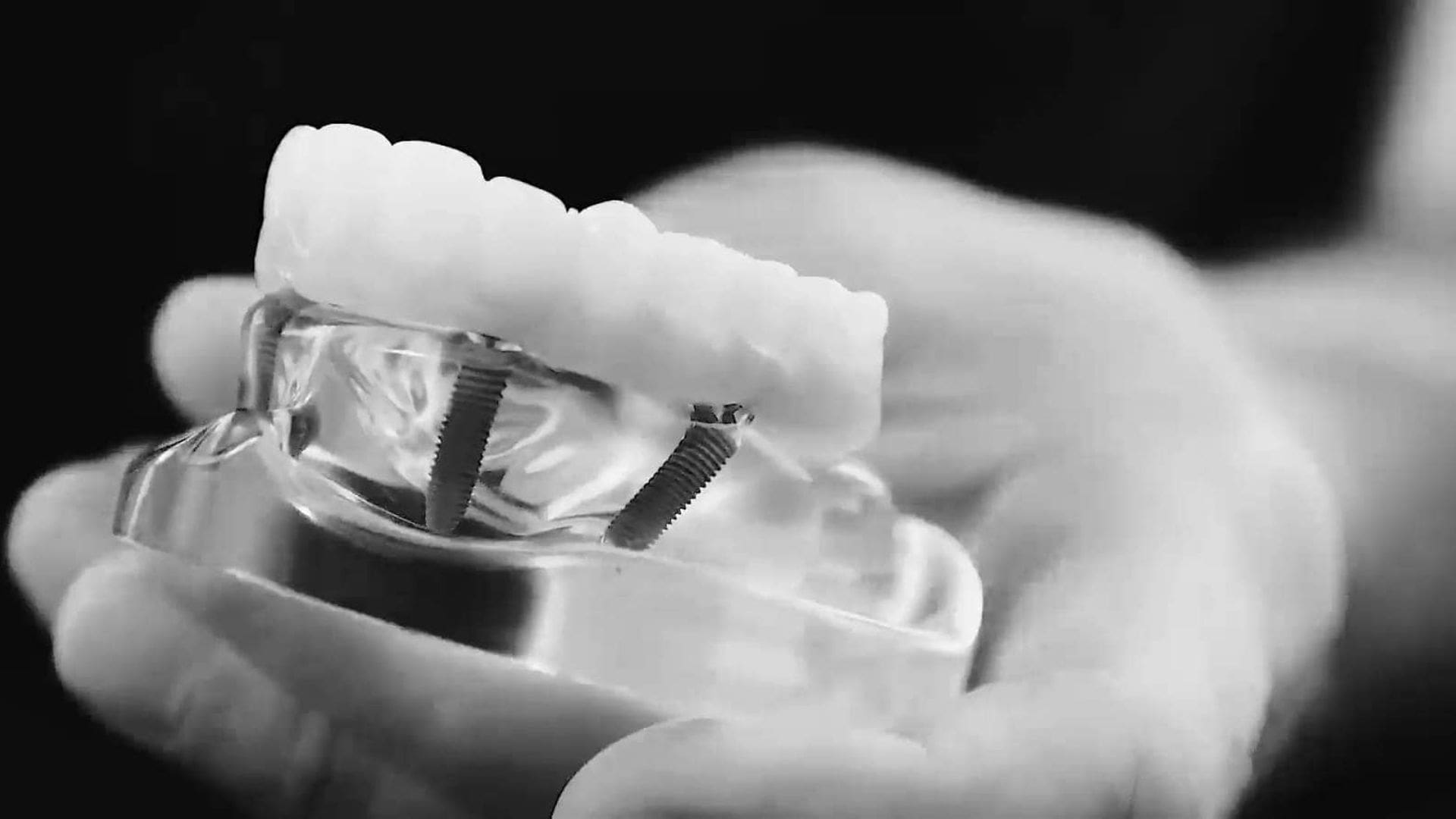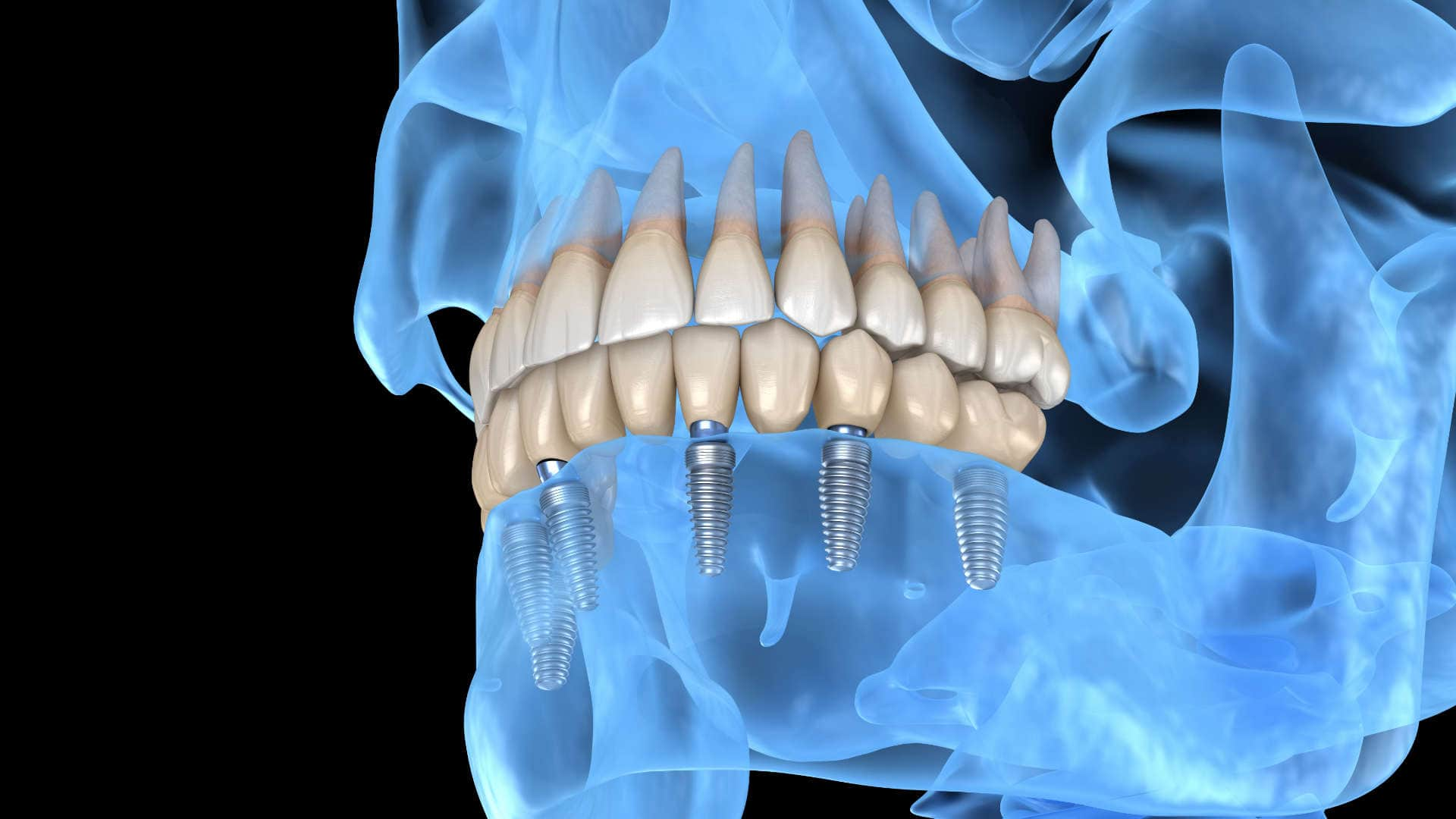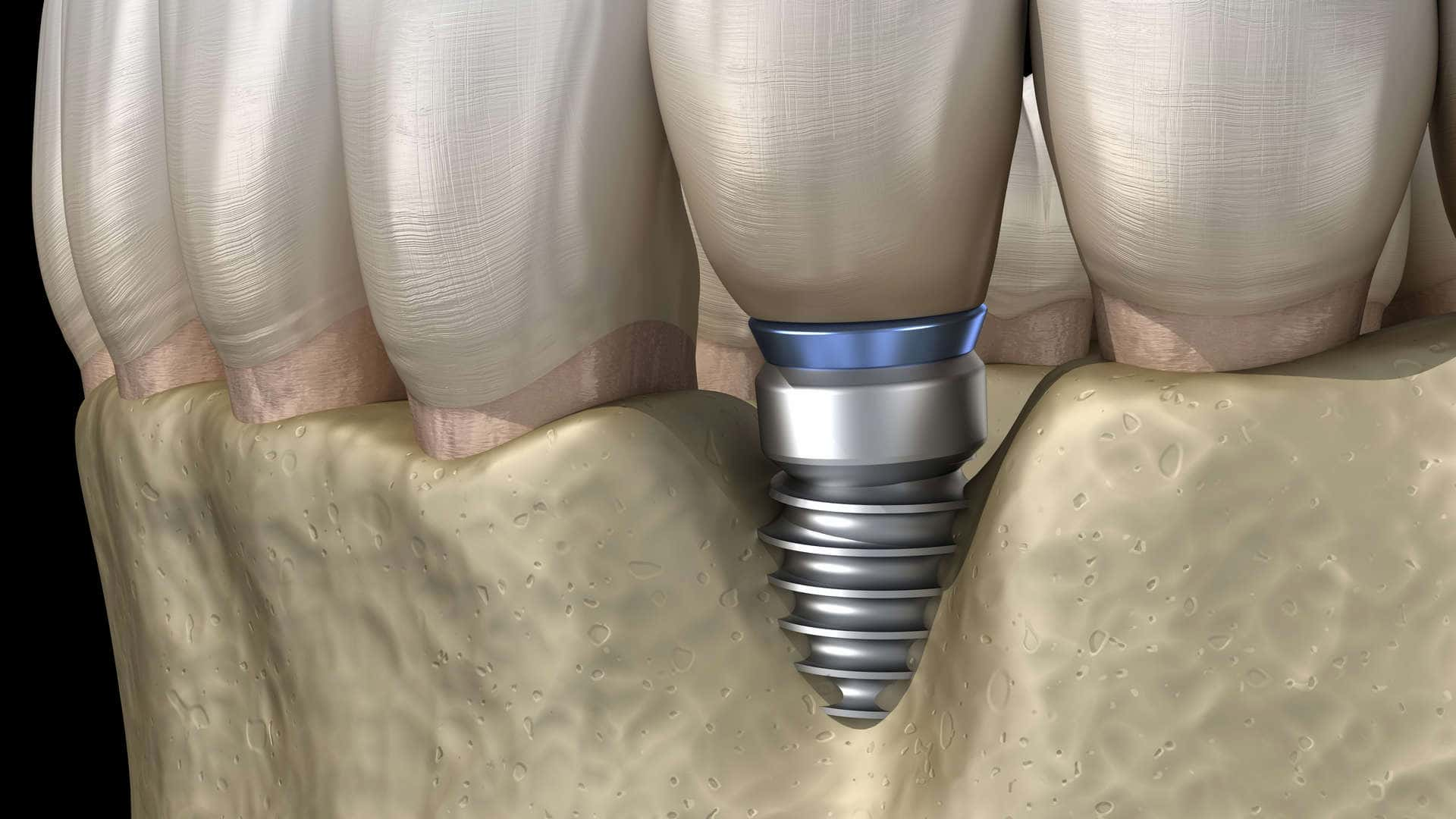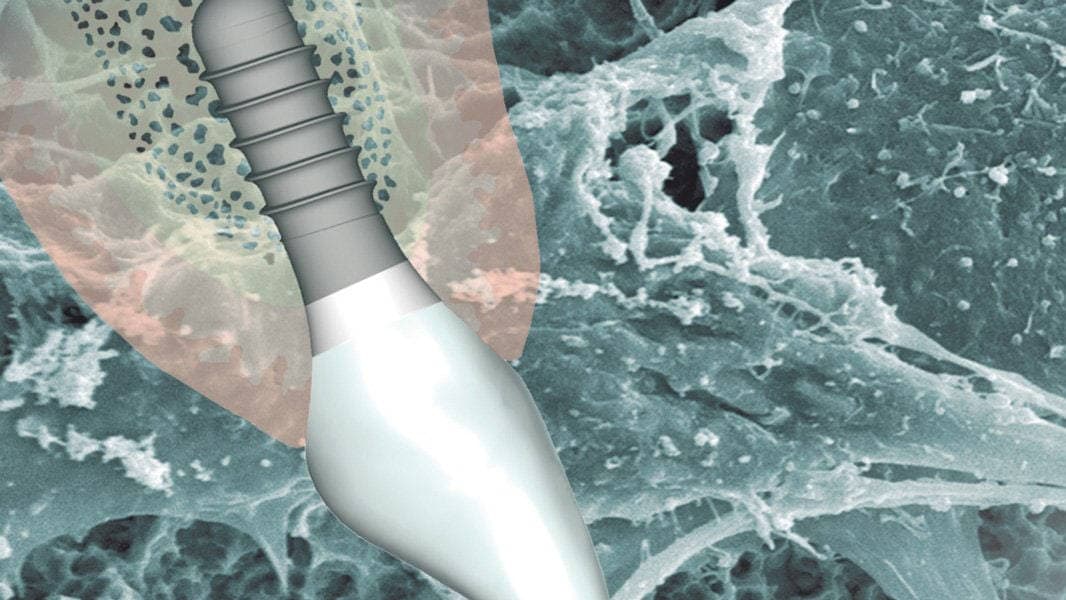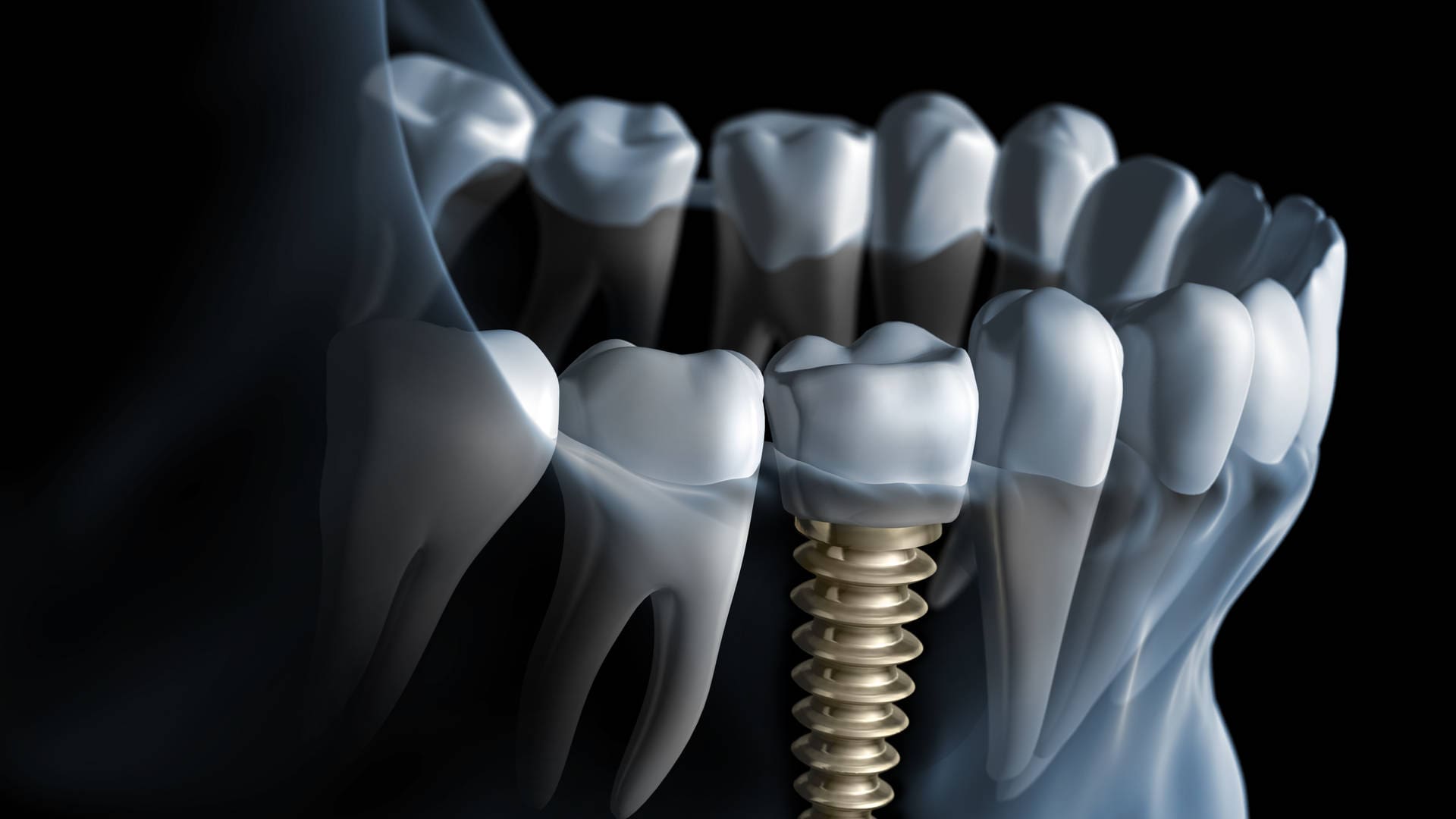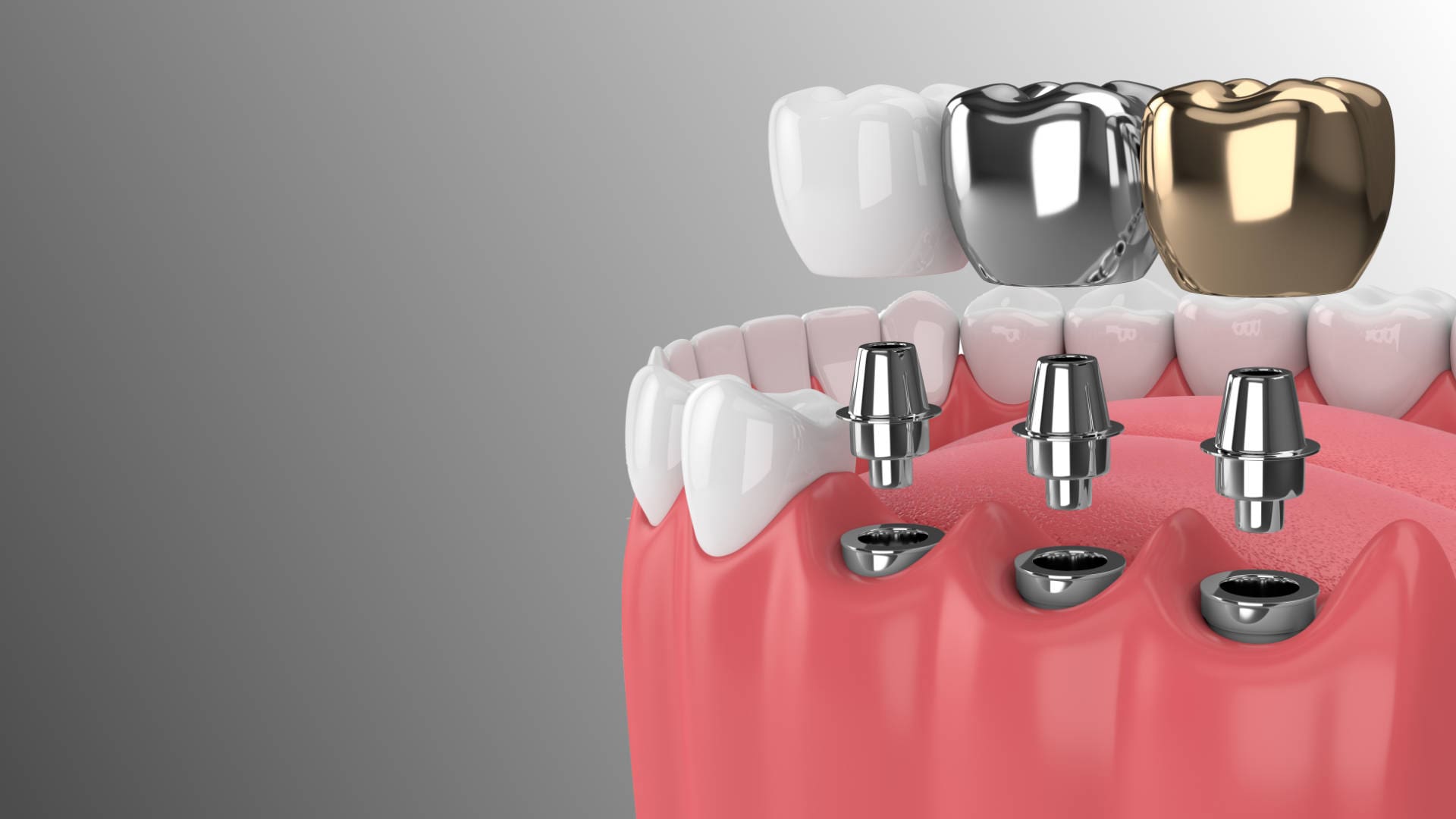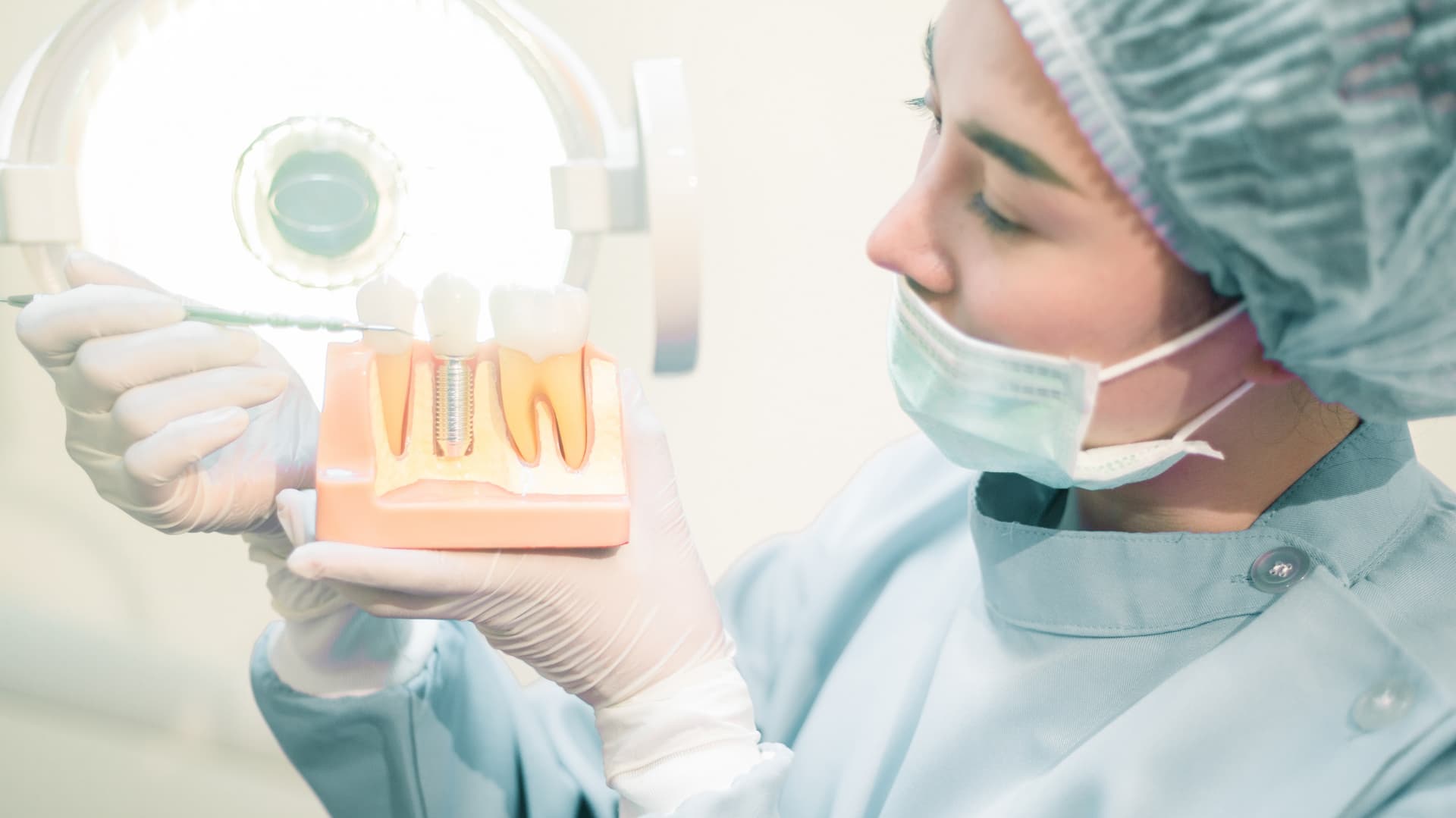The process of restoring missing teeth with Dental Implants has evolved into a short and safe procedure. Combining the specialized knowledge of our medical team with the most evidence proven & safe implant systems we have the best results. Teeth restored with dental implants will look, feel and function like natural teeth. The process of placing dental implants includes the following steps.
Step 1. Evaluation of the condition of the oral cavity
The dentist will assess the condition of your teeth, bone and soft tissues in order to see if a dental implant can be placed. Not all patients are strong candidates for dental implants. First of all, the bone of your jaws and your gums must be healthy for an implant to be placed. If you do not have enough bone, your dentist may recommend a smaller dental implant, bone grafting, or even bone regeneration procedures (using bone or soft tissue grafts and membranes) to improve the bone and gums at the site of the procedure.
If you have a lot of missing teeth, a classic dental implant may not be the only option you have. In addition to the restorations on classic implants, there are many other procedures your dentist may recommend. For example, in case you have lost all your teeth, our Clinic is a pioneer in Greece in the All On 4® method, offering you the best solution available and giving you Fixed Teeth in a Day with Immediate Placement and Loading of the Implants.
Step 2. In case of bone loss or bone defects
This stage does not involve all patients. However, in some cases, when there is loss or resorption of the bone at the implant site, the dentist may recommend a bone graft. The graft is usually placed immediately or shortly after the extraction of the tooth in order to maintain the dimensions of the bone and gums in the area. Sometimes, this is necessary when a tooth is missing for a long time and bone resorption has occurred in the area. There are many types of bone graft materials and numerous regeneration techniques, the dentist will recommend the best solution for you. After the grafting procedure is completed, the area will take some time to heal before the implant is placed. In some cases, grafting procedures are performed on the soft tissues (gums) of the area as well. Under certain conditions, the bone regeneration procedure and the placement of the implant are done simultaneously.
Step 3. Dental implant and temporary restoration
The dentist will then place the dental implant and, possibly, a temporary restoration for aesthetic reasons. The whole process of placing a single implant takes about an hour to complete. In many cases, the implant is placed using a Special Surgical Guide for absolute accuracy and safety. Our clinic has special software and equipment and by using the data of computed tomography (Dental CT Scan), digital intraoral scan (3Shape Intraoral Scanner) and 3D printer, we produce the personalized Surgical Guide for Dental Implant Placement. The dentist after the placement will recommend a painkiller to manage any discomfort you may experience during the first days after the procedure.
Step 4. Healing time
Before the permanent prosthesis (bridges or crowns) is placed, the implant site needs time to heal. For many patients, this period lasts 3 to 6 months. However, depending on the case, it may take a longer period of time for the bone and gums to heal and for the osseointegration of the implant to occur, mostly when bone regenerative techniques are used. Your dentist will evaluate your progress and therefore determine when to schedule the final appointment for the placement of the permanent prosthesis.
Step 5. Placing the prosthetic abutment and the final restoration
At the last appointment, the dentist will remove your temporary crown, screw the prosthetic component (abutment) on the dental implant and place the permanent prosthesis, bridge or crown, thus completing the procedure. Your dentist will also give you additional instructions on how to care for your implant.
Read here how the implant placement is completed.
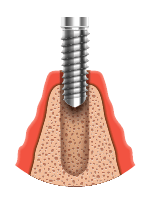
The dental implant, usually cylindrical or root shaped, made of titanium, is surgically placed in the jawbone, where the roots of the natural teeth are located.
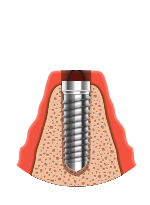
During healing, the implant integrates with the bone and is now a solid base for the prosthetic teeth. This process of osseointegration lasts several weeks. During this period your daily activities continue as usual.
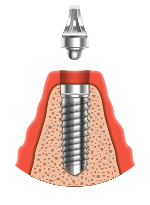
After the osseointegration period of the implant a prosthetic abutment is placed, which connects the implant to the prosthetic restoration.
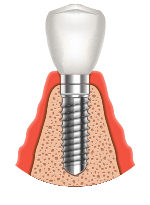
A single prosthetic tooth, a bridge supported on implants or a hybrid prosthetic restoration is placed on the prosthetic abutments of the implants.
